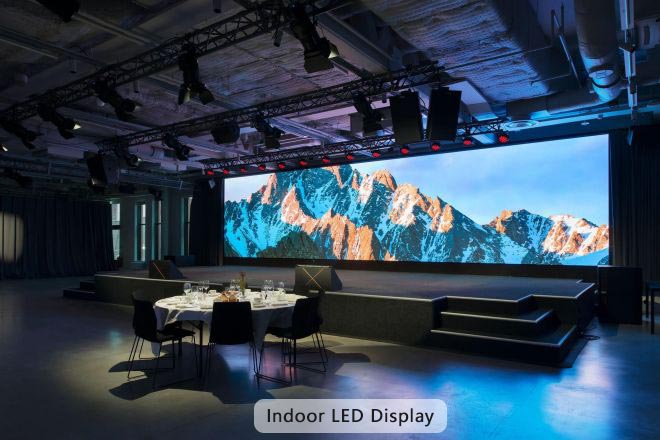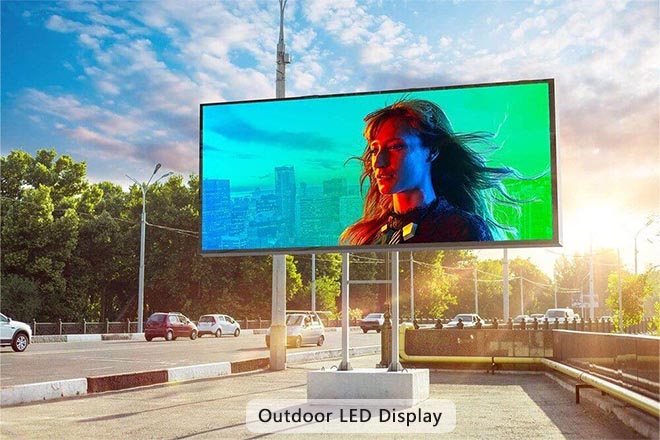LED display screens, as information dissemination tools, have been widely used in various industries. As an external visual medium for computers, LED large screen displays have powerful real-time dynamic data display and graphic display functions. The long lifespan, low power consumption, high brightness and other characteristics of LED light-emitting diodes are destined to make them a new variety in the application of ultra large screen information display. The editor has learned that many people are not very familiar with the difference between outdoor LED displays and indoor LED displays. Below, I will take you to understand the difference between the two.


01. Differences in applied products
Relatively speaking, outdoor display screens are usually installed above large walls for advertising purposes, and some use a column. These positions are usually far from the user's line of sight, so there is no need to use too small spacing. Most of them are between P4 and P20, and the specific display distance depends on which type is used. If used indoors, considering that the user is close to the LED display screen, such as in some conferences or press conferences, it is necessary to pay attention to the clarity of the screen and not be too low. Therefore, more products with small spacing should be used, mainly below P3, and now the smaller ones can reach P0.6, which is close to the clarity of LCD splicing screens. So one of the differences between LED display screens indoors and outdoors is the difference in product point spacing used. Small spacing is usually used indoors, while large spacing is usually used outdoors.
02. Brightness difference
When used outdoors, considering direct sunlight, it is required that the brightness of the LED display screen must reach a certain level, otherwise it may cause the screen to be unclear, reflective, etc. At the same time, the brightness used for facing south and north is also different. When used indoors, due to the significantly weaker lighting indoors compared to outdoors, the brightness of the LED display screen commonly used does not need to be so high, as being too high can be very eye-catching.
03. Installation differences
Usually, when installed outdoors, LED display screens are commonly used for wall mounting, columns, brackets, etc. They are usually maintained after use and do not need to overly consider the limitations of installation space. For indoor LED display screens, the installation environment and load-bearing capacity of the wall need to be considered, and maintenance design should be used before use to save installation space as much as possible.
04. Differences in heat dissipation and product specifications
The fourth is the difference in details, such as heat dissipation, module and box. Due to the high outdoor humidity, especially in summer when temperatures can reach several tens of degrees, in order to ensure the normal operation of the LED display screen, it is necessary to install air conditioning equipment to assist in heat dissipation, otherwise it will affect its normal operation. However, it is usually not necessary indoors, as it can be displayed normally under normal temperature conditions. In addition, LED display screens installed outdoors usually use a box type design, which can maximize installation convenience and screen flatness. When used indoors, considering the overall cost, modules are usually used, which are composed of individual unit boards.
05. Differences in display functions
Outdoor LED display screens are mainly used for advertising, mainly for playing promotional videos, videos, and text content. In addition to advertising, indoor LED display screens are also used in big data displays, conferences, exhibition displays, and other occasions, displaying a wider range of content.
I hope the above content can help you better understand the difference between indoor and outdoor LED display screens. As a professional LED display screen manufacturer, we will customize a suitable LED display screen for you according to your needs. Please feel free to inquire, and we will reply as soon as possible. Looking forward to working with you!
Post time: Sep-23-2024




